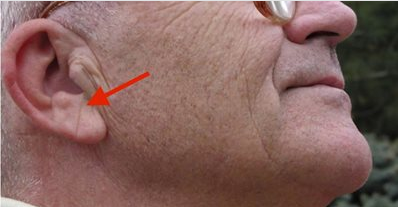If the eyes are the windows to the soul, then the ears are
the windows to the heart. Science says that ear canal hair, that dollhouse
garden of black strands inside many an ear, is a common signpost for heart
attacks.
How the idea occurred to them is a mystery, but in 1973, Dr.
Sanders T. Frank and his team of researchers published a study in the New
England Journal of Medicine claiming that a diagonal earlobe crease, then
nicknamed “Frank’s Sign,” was a positive predictor of coronary artery disease.
CAD is a plumbing problem where waxy plaque deposits build up inside the
arteries, a condition called atherosclerosis usually caused by too much ESPN
exposure.

Intrigued by this clairvoyant ear-heart connection,
physicians partnered with dermatologists to find answers. In 1984, a group of
New York physicians published a letter in the New England Journal of Medicine
claiming a strong association between ear canal hair and coronary artery
disease. In a study of 43 men and 20 women, 90 percent of participants who had
both a diagonal earlobe crease (DELC) and ear canal hair experienced cardiac
failure.
Those physicians, including Richard F. Wagner of Boston
University Medical School, suspected that long-term exposure to androgen, the
king of male hormones and father of testosterone, caused clots in the arteries
due to surplus production of red blood cells.
Five years later, in 1989, an article appeared in the Indian
Heart Journal in which the researchers published their conclusions from a study
involving 215 Indian patients and correlations between earlobe creases, ear
hair and coronary artery disease. “A significant difference was also observed
between men with and without CAD in the presence of ear-canal hair with age
matched group,” wrote the authors in the report abstract. Ear hair prevalence
advanced with age.
Not to be outdone by the 20th century, Edston E. published
his study in the June 2006 edition of the American Journal of Forensic Medical
Pathology. Edston studies 520 autopsies and measured the BMI, spleen weight,
ear hair, earlobe crease, cause of death, baldness, thickness of abdominal fat,
and a half dozen other characteristics. After crunching the numbers, “It was
found that ELC (earlobe crease) was strongly correlated with CAD in both men
and women (P < 0.0001) but with sudden cardiac death (SCD) only in men (P
< 0.04).” The younger the patient, the higher was the positive predictive
value.
No one is quite sure why ear hair and heart attacks make
good bedfellows. Some accuse testosterone supplements. Others think that as
people age, they get hairy and overweight, and they die from the latter.
Thankfully, no one blames ear hair.
Source:positivemed.com

